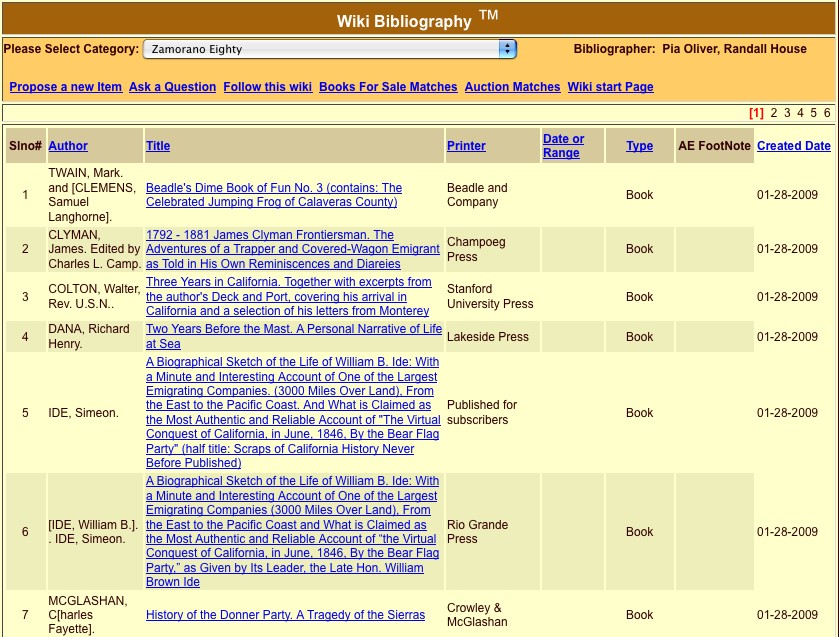Wikis Add the AED and Prepare for Stage II
- by Bruce E. McKinney

Zamorano 80: first cut
By Bruce McKinney
This is an Update on Wiki Bibliographies, the future of buying and selling works-on-paper. The goal of this project is to organize available material [books, pamphlets, broadsides, ephemera, maps, paintings and other works of art] into collecting contexts that help both buyers and sellers understand relevance, rarity and price. The heart of the Wiki is a living bibliography that over time becomes ever more extensive, always incorporating new material as its relevance is confirmed. This is the 5th month in the project and this month Wiki Bibliographies include a variety of new features: free preliminary and full subscription searches in the AED as well as a link for background articles on each subject. Each month the Wikis continue to evolve.
Today most old, collectible and rare books are sold for less than they are worth because their only context is typically within listing sites to other listed copies. Most sellers simply hope buyers will know why to buy because sellers themselves are often unsure what the potential purchaser's motivation will be. Such listings are strong on bibliographic detail and short on descriptive narrative, their listing prices high and the buyer unconvinced. Those items that do sell tend to be well-described or priced below their actual value. This has always been so. Great dealers and great auction houses spin great tales and receive well-earned premiums. However, few people have the intellectual gifts and patience to do this. For them Wikis, by providing extensive bibliographic and subject context, add the element that most listings lack and that makes material attractive to a larger audience: relevance. Wikis answer the question "why should I buy this?" A great storyteller is always going to have an edge but for the vast majority of items the Wikis will get both buyer and seller onto the same page. From there it is simply a matter of condition and price. Of course, if there are more copies than buyers prices will fall and, if there are more buyers than copies, prices will rise. These days collectors, like everyone else, are off in a thousand directions. Point them in one by providing a single place to monitor most of the activity in a collecting area and, because it saves so much time, the market in this collecting niche will be strong - both when they are buying and someday selling.
One aspect of the Wikis not yet fully appreciated is that they are neutral to both form and source. Think about that for a moment. It does not matter where the material comes from. Put a fair price on a properly described item, and if the Wiki has a following, such material will find a buyer. Because there are more than 160 million books on line and the material organized ALPHABETICALLY rather than by collectible subject, it is almost impossible to efficiently locate material in a way that compares examples of one item with examples of another. Examples of the same book may be compared but general comparisons to all available material within a specific collecting area are impossible. Wikis change this. The relative worth, rarity and importance of material can be meaningfully compared; the frequency of appearance [on the market] calculated; and more items considered; perhaps ten, not just one or two. I therefore say without hesitation that, while the traditional listing sites will continue as giant wholesalers Wikis or some version of the concept will soon redefine the way collectible material is bought and sold. Wikis increase the value of material while valuing the collector's their time and ambitions.